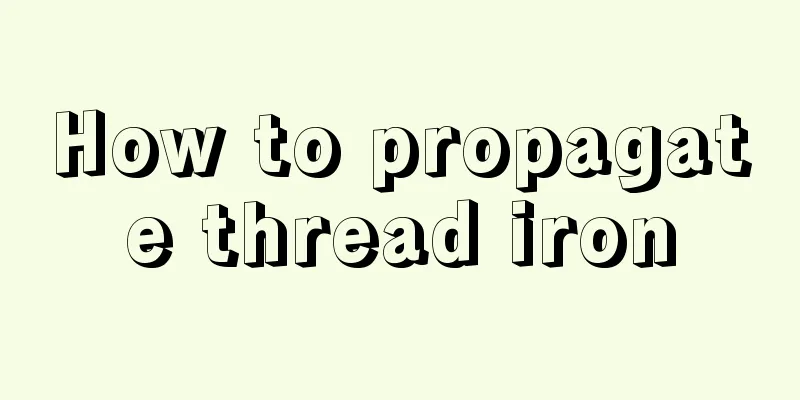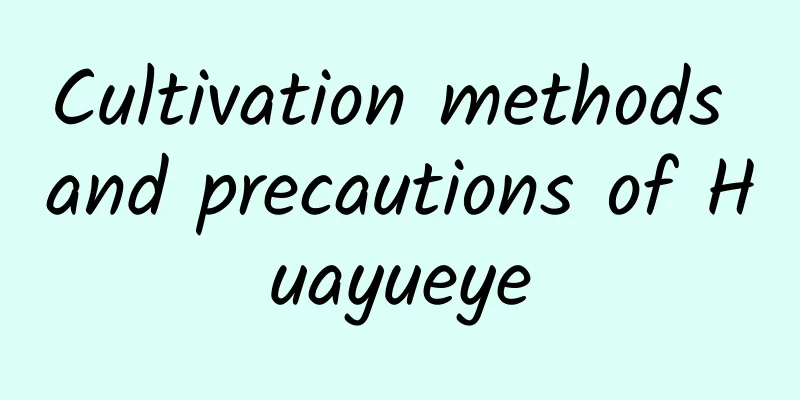How to propagate thread iron

Cutting propagationThe suitable time for cuttings of thread iron is generally between March and October. When cuttings, place the cuttings with the buds facing upwards and insert them into the soil at a slight angle. The cutting depth should be about 1/2-2/3 of the cuttings. Management after cuttingWater thoroughly immediately after planting. The moisture content of the cutting medium should be around 60%, and the relative humidity should be maintained between 80% and 90%. Pay attention to replenishing water in time. Callus tissue can usually be formed after half a month. At this time, in order to facilitate rooting, you can begin to gradually reduce the amount of watering. It is best to keep the temperature 3-6℃ lower than the substrate temperature. You can use a film to cool down and keep moisturizing. The suitable temperature for rooting cuttings is about 20-25℃. If the temperature is above 30℃, ventilation is needed at noon and water spray is used to cool down. After planting, you should spray with 65% mancozeb or 800 times diluted 50% carbendazim. Generally, spray once every 5 days, especially after rain, remember to spray in time. After the cuttings take root, you can gradually reduce the number of spraying times. After the callus tissue is formed, foliar fertilizer is needed once a week, and in the later stage, a mixture of 0.2% to 0.5% urea and potassium dihydrogen phosphate can be sprayed. Cutting seedling cultivationAfter the cuttings have grown for half a year, they can be transplanted when they are about 15-20 cm in length. Transplanting is generally carried out in spring and autumn, with the suitable time being between February to May and September to October. When transplanting, you should choose a place with a shade density of 60%-70%, a water source, and stone with moss to increase the survival rate. It is generally best to use the clamp nail method for cultivation. Use steel nails to compact the threaded iron roots, then clean the root system, retain other mosses, increase moisture content, and thus improve the survival rate. |
>>: Fertilization method of horse hoof gold
Recommend
How to grow Christmas cactus to make it more vigorous?
Christmas cactus is a favorite potted plant among...
How long can fresh cut lisianthus flowers last?
1. How long can it be raised? In fact, how long f...
When is the best time to repot bonsai? What is the best month to repot bonsai?
Bonsai repotting time Bonsai needs to be repotted...
Can jackfruit seeds be planted?
Can jackfruit seeds be planted? Jackfruit seeds c...
The sowing and propagation method of Michelia sempervivum
Soil selection Michelia sempervivum is a shallow-...
Time and method of cutting red maple
Red maple cutting time It is best to propagate re...
Seeding propagation method of white sandalwood
Seed propagation of white sandalwood Seed collect...
Anthracnose of Phalaenopsis and its control methods
Anthracnose of Phoebe The most common disease of ...
Can I use vinegar to remove black spots on orchid leaves?
1. Can I use vinegar? Black spots on orchid leave...
How to grow Nine-headed Lion Grass
1. Soil Nine-headed lion grass is more suitable f...
How to grow ivy
Choose the right soil Ivy has soft stems and is e...
How to grow bamboo grass
1. Watering The way to water this kind of plant i...
What to do when the succulent platter grows up
1. What to do when you grow up 1. Removal: The su...
How to prune blueberries
Pruning of flower buds The flower buds of potted ...
How to choose a shed for nail orchids
Nail orchid room orientation The orchid room shou...









